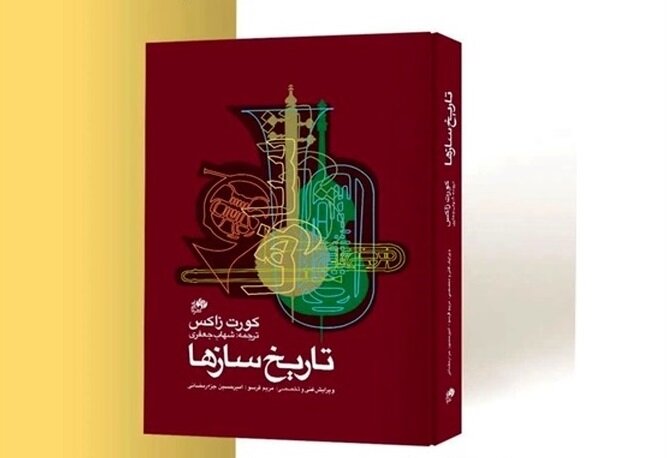“The History of Musical Instruments” published in Persian

TEHRAN-The Persian translation of “The History of Musical Instruments” is now available in the Iranian book market.
Translated by Shahab Jafari, the book has been published by Nay o Ney Music Book Publisher in 466 pages, ILNA reported.
“The History of Musical Instruments” is an unabridged republication of the 1940 W.W. Norton edition by leading musicologist Curt Sachs, who was co-devisor of the Hornbostel-Sachs classification scheme (first published in 1914) for musical instruments.
The book was a classic in 1940. It still is; and one likely to provide answers to most questions about most forms of musical production – save the voice.
The 17 chapters with an epilogue are organized chronologically into four parts: “The Primitive and Prehistoric Epoch,” “Antiquity,” “The Middle Ages,” and “The Modern Occident”. Chapters in each part work their way through the relevant geographical regions. Naturally there is greater emphasis outside Europe in the first part and within Europe in the last. This approach allows general principles to be set out on both how sound becomes music, and how societies value and use instruments.
This is no dry survey across time and location; it is an evaluation of how (families of) instruments have evolved, adapted and disappeared. And when and why. By taking a developmental approach and by contrasting the societies and their technologies one with another, our understanding of any one (type of) instrument and its uses is deepened.
Lovers of western classical music will not be disappointed and will find it instructive to see how many instruments in the contemporary symphony orchestra and smaller ensembles relate to older folk instruments.
Coverage of families from all five continents is thorough, expert and easy to read and understand. Electrical and electro-acoustic instruments emerging since the second world war, of course, are missing from the book. The ten-page epilogue dealing with the twentieth century really covers only the predominance of percussion and wind as well as a propensity for extremes (e.g., of some instruments' size and power) and interest in the instruments of earlier periods.
It is a resource packed full of well-developed technical, social and historical theory and detail. Where an instrument or family has developed rapidly and over a determined period of time, Sachs painstakingly documents the changes, illustrates them and provides a musical assessment of the advances and advantages.
The book's index is thorough and follows the convenient convention of capitals for people, italics for names in other than English as well as initial capital book font for instruments. Families (such as Clarinet) are further subdivided in the index by region. There are two dozen plates (monochrome photographs) and over 160 illustrations.
SS/SAB

Leave a Comment